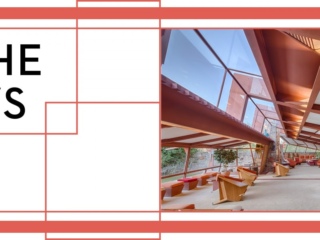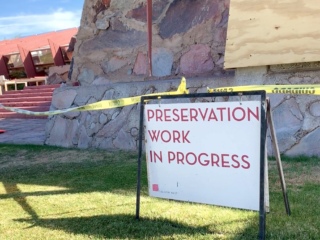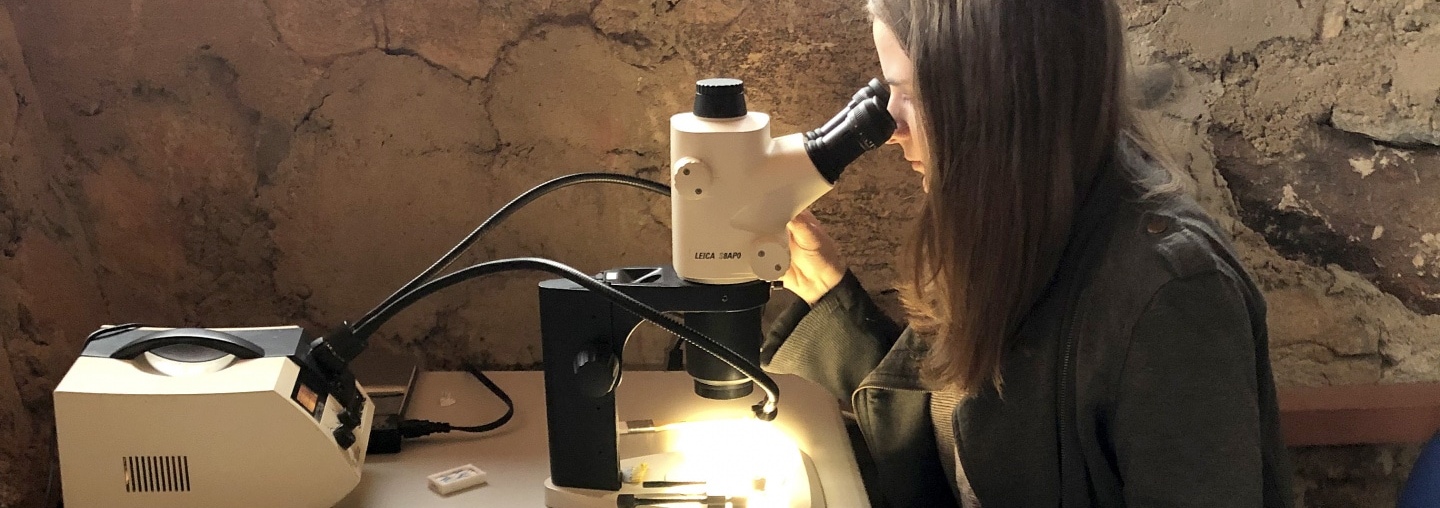
UPENN Students Uncover History at Taliesin West through Preservation Research
Frank Lloyd Wright Foundation | Jul 15, 2019
Earlier this year, two students in the historic preservation program at PennDesign, University of Pennsylvania’s Design School, conducted in-depth, on-site research on the historic preservation of Taliesin West, Frank Lloyd Wright’s winter home and desert laboratory in Scottsdale, Arizona. Here they share some of their findings and what they took away from the experience.
In early January, two students from the University of Pennsylvania’s historic preservation program came to Taliesin West, Frank Lloyd Wright’s winter home and desert laboratory in Scottsdale, Arizona, to conduct in-depth research about the history of the site. For her thesis, Ashley Losco, who was working on completing her Masters in Historic Preservation at the time, focused her project on the history of Taliesin West’s Garden Room, including the history of the furnishings, décor, and color schemes. Mia Maloney, who was also working on completing a Masters in Historic Preservation, conducted research about the materials used throughout the property, in which she identified the wood species and age of the wood used to construct the buildings. Here they share an in-depth look at their process, as well as what they discovered through their research of Taliesin West.
Tell us a little about yourself.
Ashley: I’m originally from Jacksonville, Florida. I have my BA in History and Museum Studies from the Florida State University. Right after undergrad I went to the University of Pennsylvania for my Masters in Historic Preservation, which is how I ended up at Taliesin West for my thesis. I now work for a small preservation and planning firm, Urbana, in San Diego, California, as a Historic Preservation Planner and Architectural Historian.
Mia: I grew up in the Gettysburg area, living in the nearby towns of Orrtanna and Cashtown. I obtained my BFA from the School of the Art Institute of Chicago, and recently graduated with a MS in Historic Preservation from the University of Pennsylvania.
Had you interacted with Frank Lloyd Wright’s work prior to coming to do research at Taliesin West? What drew you to conduct your thesis on a Wright site?
A: Before my thesis, I had not interacted much with Frank Lloyd Wright’s work. I knew the basics, but I did not know much about him. When I heard about the research opportunities at Taliesin West, I thought this would be a great opportunity to learn more about Wright’s work. The project was also within the scope of work I want to follow for my career: researching and documenting historic sites for future preservation.
M: I had never toured or been inside any of his work, but I had seen the exterior of several Wright sites while attending school in Chicago, as well as some of his windows at the Art Institute of Chicago. Part of the reason I was drawn to conduct my work on a Wright site was because I had so little experience with any of them.
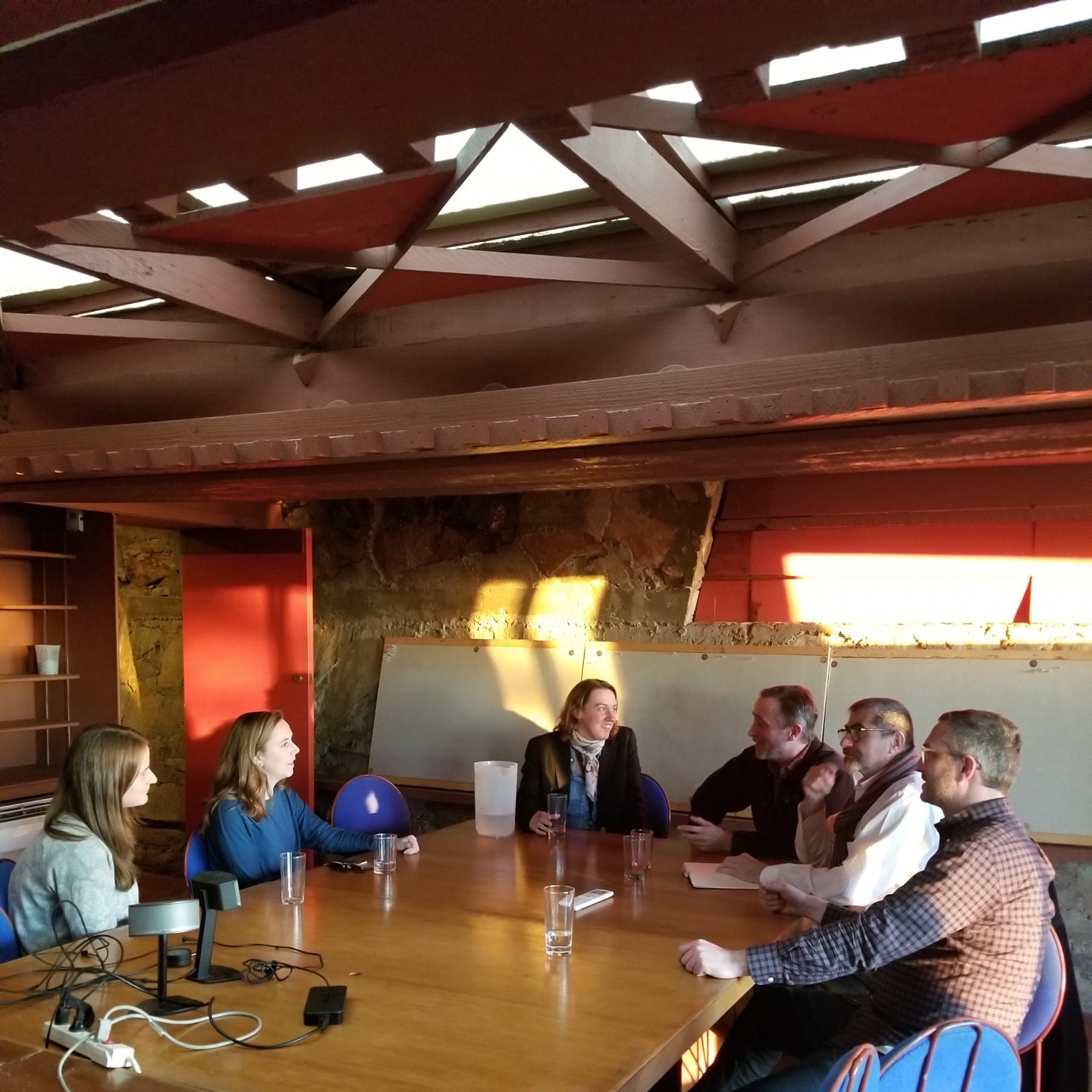
I was also excited to get to know his work better at a site that was continual work in progress. Because Taliesin West was his home, Wright was free to experiment more and alter designs repeatedly. I hoped that this could potentially help me to better understand him and his process, as opposed to studying the final designs at sites he did for clients, whose needs he had to consider, and which wouldn’t have evolved in the same way.
What stands out to you about Taliesin West, and Wright’s work overall, in comparison to other places where you’ve conducted similar research?
A: Those at Taliesin West have such a deep connection to Wright and his work. Everyone has a different connection to him, be it a past Fellow, an architectural historian, or someone on the board, but they all feel extremely passionate about Wright and his work.
M: First, everything seems intentional, down to the placement of each stone as a part of the composition of a wall. Second, the amount of changes that occurred in the original Dining Room over just a few decades. The deliberate feel to every element in the space paired with the few major evolution in building technology over the period at which Wright developed the site meant that it was difficult to understand how the site grew using building archaeology alone, though building archaeology was critical in confirming my theories of its evolution. Little evidence of specific campaigns of change stand out immediately. Fortunately, this was during the time of photography, so the evolution was easier to piece together than at older sites where less documentation exists.
Ashley, the Garden Room is a complex structure that has been altered dramatically both during and after Wright’s lifetime. Can you describe your process of tracking those changes over time?
A: To track the changes of the Garden Room was very difficult. A lot of the changes were never written down or documented through architectural drawings. I started by looking for changes in historic photographs I could find, those through the Taliesin West Archives and those in the Avery Archives at Columbia University. I also looked through primary documents for any indications of changes. The most helpful was Curtis Besinger’s book, “Working with Mr. Wright,” which documents Besinger’s time in the Fellowship by season. I was able to pair the firsthand accounts with the pictures to put them in chronological order. After studying photos and primary sources, I documented the current structure for any visible changes. For example, on the West Elevation (the wall that faces the prow), there are visible cold joints where new walls or sections were added. These changes helped fill in any missing gaps.

You conducted a thorough study of the history of the furnishings, décor, and color schemes; can you walk us through that evolution?

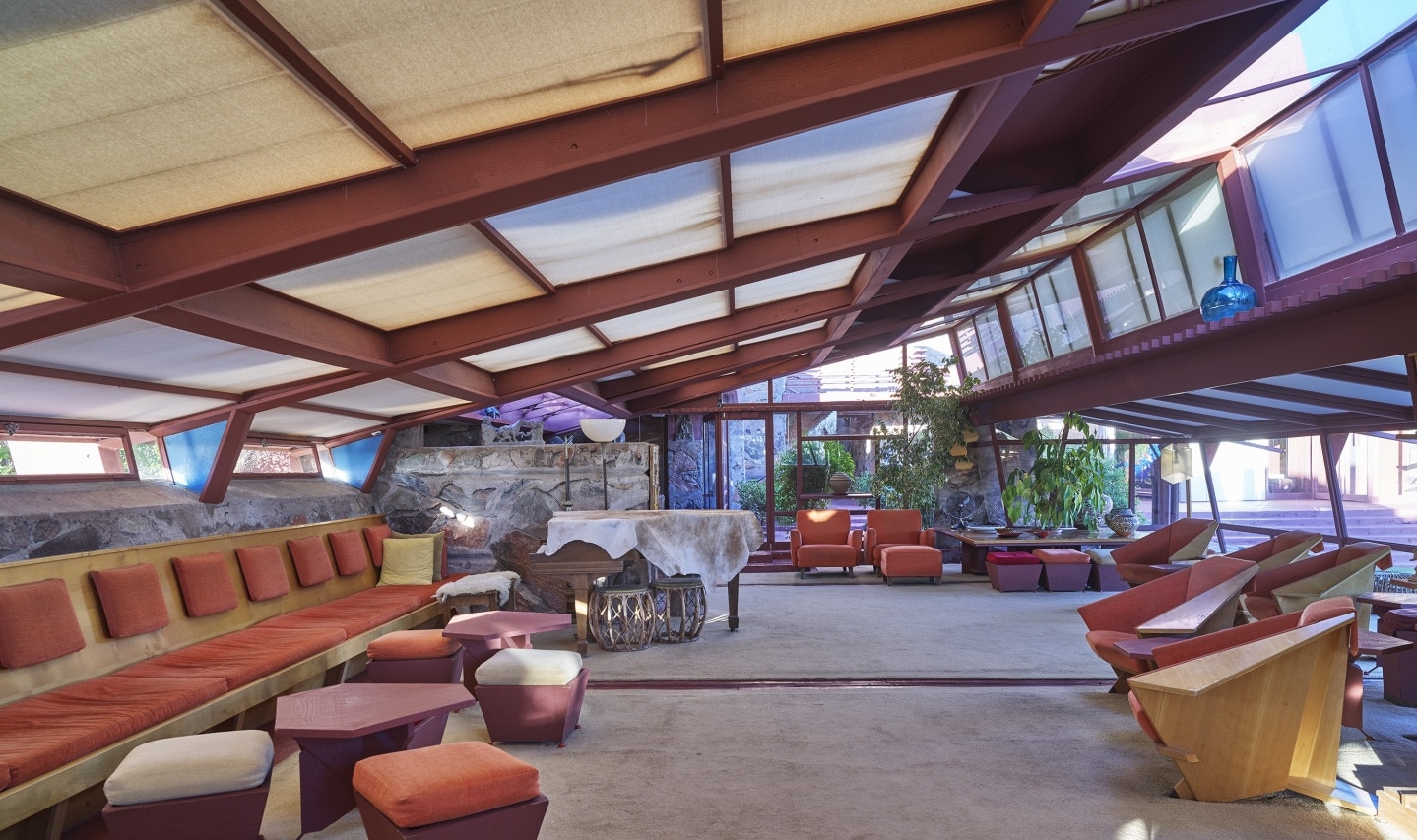
A: The décor changed often, so often that I can’t fully describe the changes. However, starting in 1940 the room was simply decorated with herringbone print cushions on a handful of hassocks (way less than currently), there were long wood tables that connected the East Porch to the interior of the room since the room was completely open to the environment. Starting in the mid-1940s, the interior decoration became more comfortable and plush, with upholstered chairs and sheep skin rugs. More lamps, pottery, and art were added to the room. The room also had Ralph Rapson chairs, which had just come out that year, so the connection between Rapson and Wright would be interesting to research. The color scheme was pale yellows and greens.
Moving into the 1950s, the Origami Chairs appear in photographs. Wright designed the chairs for the V.C. Morris house, which was never completed, so he adopted that design and two other furniture designs for Taliesin West. Around this period the color scheme is darker burgundies, blues, greens. The Heritage Hendredon furniture appears in photographs, possibly just for marketing reasons. The piano and Iovanna’s harp are always in the room from the beginning. In the 1960s and 1970s, there’s more furniture in the room: a dining table is on the East Porch, more screens, the main color is an orange color with lots of throw pillows.
Mia, you used several different methods of material analysis during your work, can you explain a little about each of these and why they were important in understanding the building?
M: Wood identification was used to determine the species of the wooden members. Both macroscopic and microscopic features can be used to identify wood species, such as resin canals and the transition between early and late wood. Each species is unique in its features and how they are arranged. All of the samples taken were found to be redwood (sequoia sempervirens). This finding helped to support the belief that much of the wood dated to Wright’s period, as it is known that he used redwood when building the original Dining Room. Knowing the species and its characteristics also informed how it should be conserved, and what wood that should be used in any replacements.
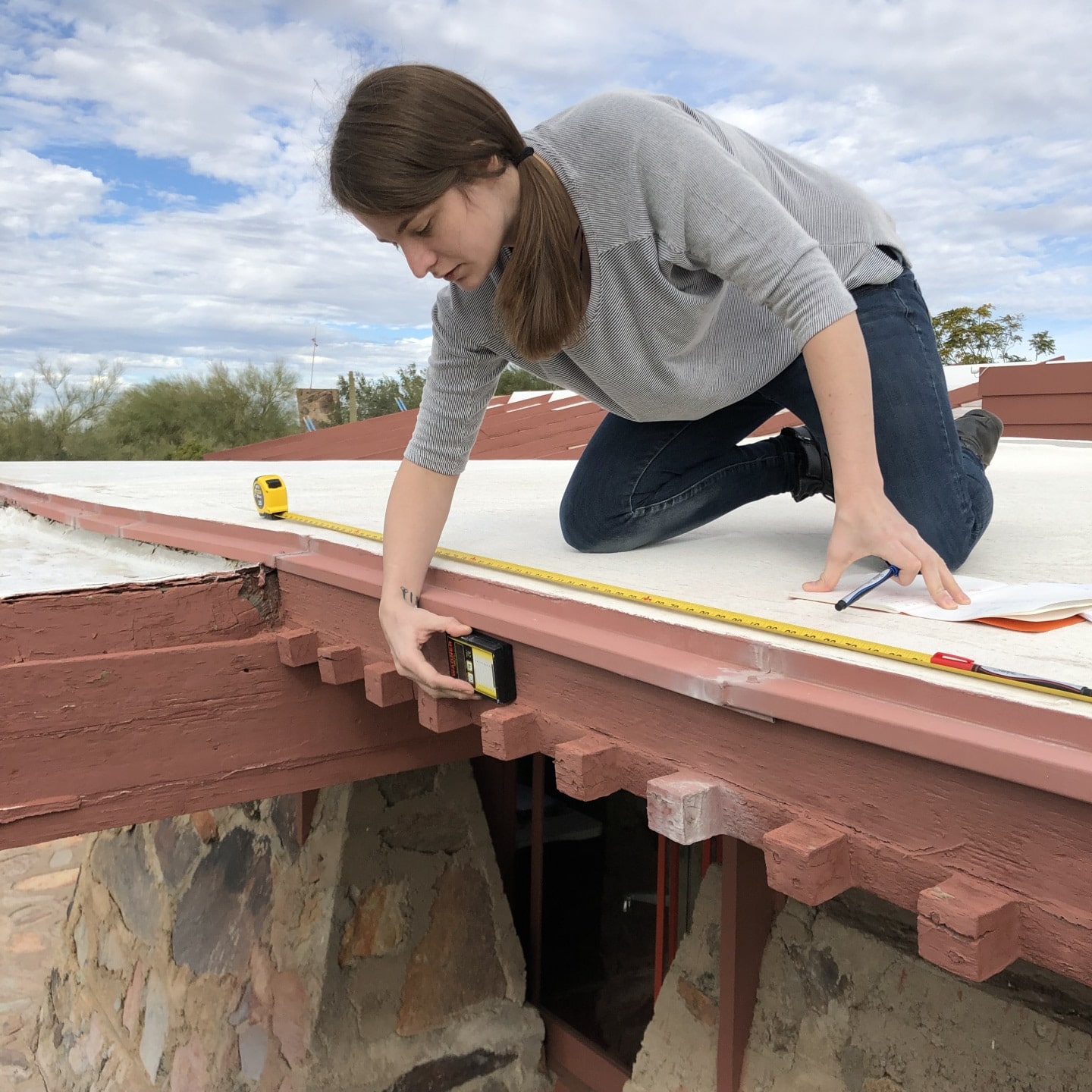
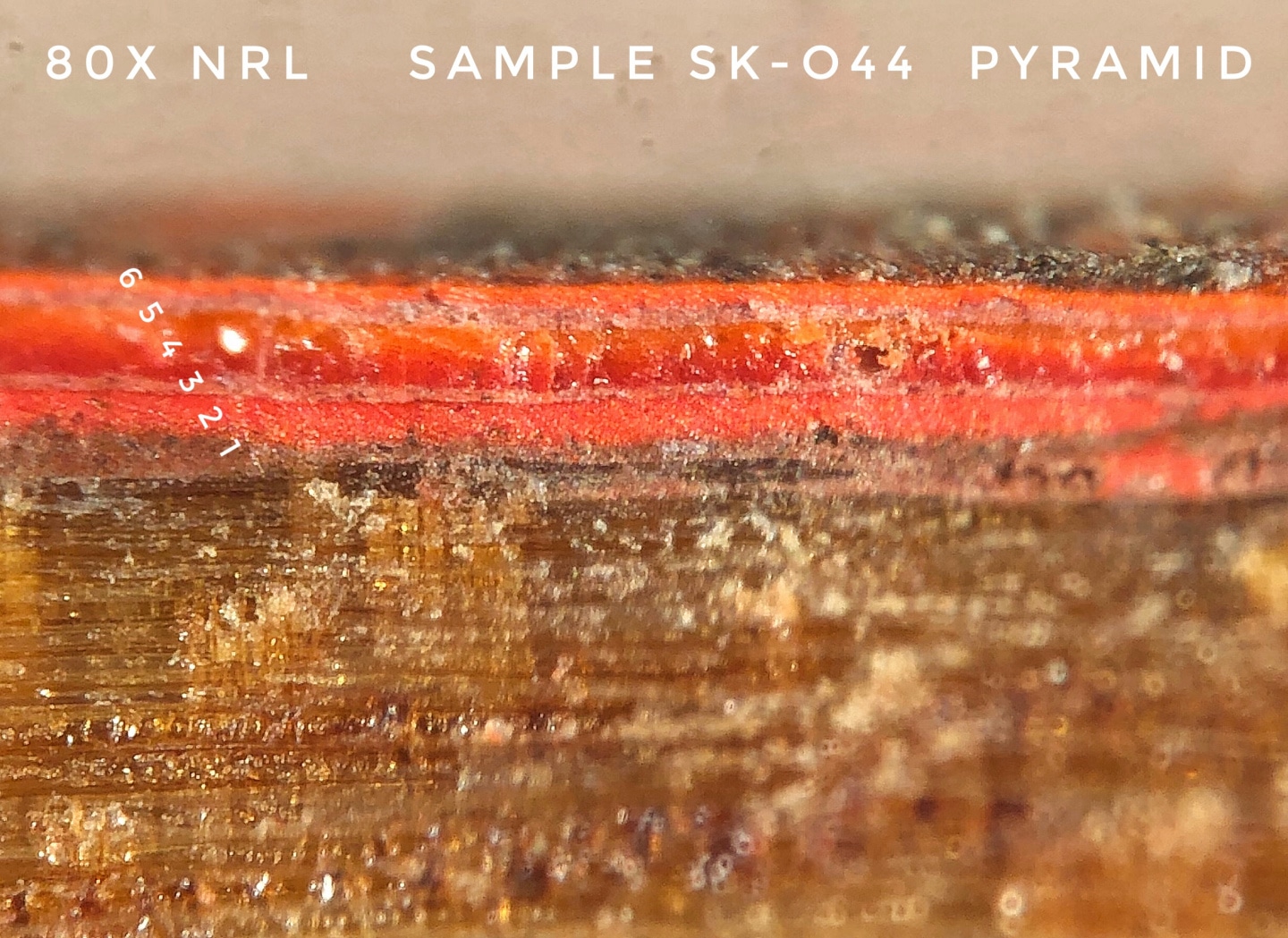
Finish analysis was used primarily to provide confirmation of theorized campaigns of changes, and secondarily to understand any previous color schemes. Small samples of select wooden members were taken, including the layers of paint and wooden substrate. The samples were cut in so that each layer of paint was exposed and could be analyzed under a microscope. By comparing the layers of different elements, patterns in the numbers and colors of the layers can sometimes provide information about which element were present and painted first, which were added later, and which changed in their finishes the most often. However, due to the interior original Dining Room not being painted until the late 1950s, the finish analysis was limited in what information it could provide.
Methods were also used to analyze the condition of the wood. Moisture content readings were taken with a moisture meter which when calibrated for a specific species can provide the percentage of moisture near the surface of wooden element. Infrared thermography, which detects infrared radiation and creates an image of the surface temperature of an object, was also used to find areas with a high moisture content. This is possible because areas with a higher moisture content have a lower surface temperature. Understanding the moisture content of the wooden members was important in determining which elements are at risk, as fungal decay and insect activity requires specific ranges of moisture in order to cause wood to deteriorate.
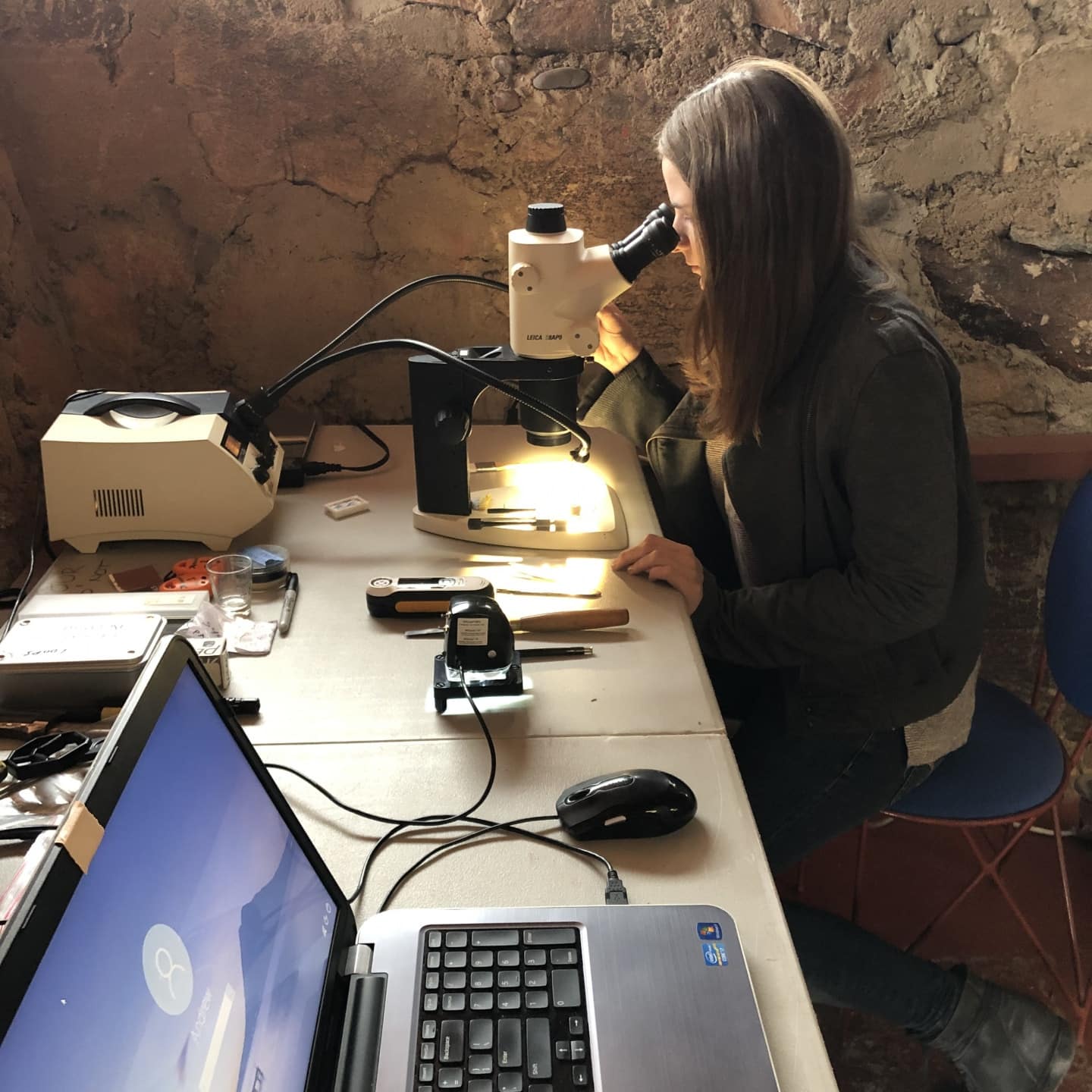
During your research you discovered that some of the wood members date to the 1940s, can you describe the process of making that determination?
M: While multiple methods of material analysis were used during my research, the definite dating of some of the members to the 1940s was done simply by comparing photos from that period to the wooden elements that are present today. Though the structure is now painted, the location of large knots in the some of the members are still visible. It was amazing looking at a photo taken in the 1940s and realizing that the location of the knots on some of the members in the photographs were exactly the same as the knots on the members in place today. Once some members were established as original to the 1940s or other periods, the period of other members could be theorized based on how the site was built, what had to be in place first, and what doesn’t appear to have been altered.
What was your biggest revelation, or most interesting conclusion, during your thesis work?
A: The Garden room has changed every year including up to present day. This makes preserving the room into the future difficult. How to interpret the room changes with different individuals in charge at the time, so the room is ever-evolving.
M: I was surprised at how well-preserved portions of the original Dining Room are, considering the age of some of the wooden members and some of the environmental factors they have endured. While these factors have facilitated the structures deterioration with some members in advanced stages of decay, and these factors should be addressed in the site’s future preservation, many were in relatively good to fair condition for a space that has been exposed to the elements and experiences high fluctuations temperature and relative humidity throughout the day, which can accelerate conditions such as cracking and deformation.

